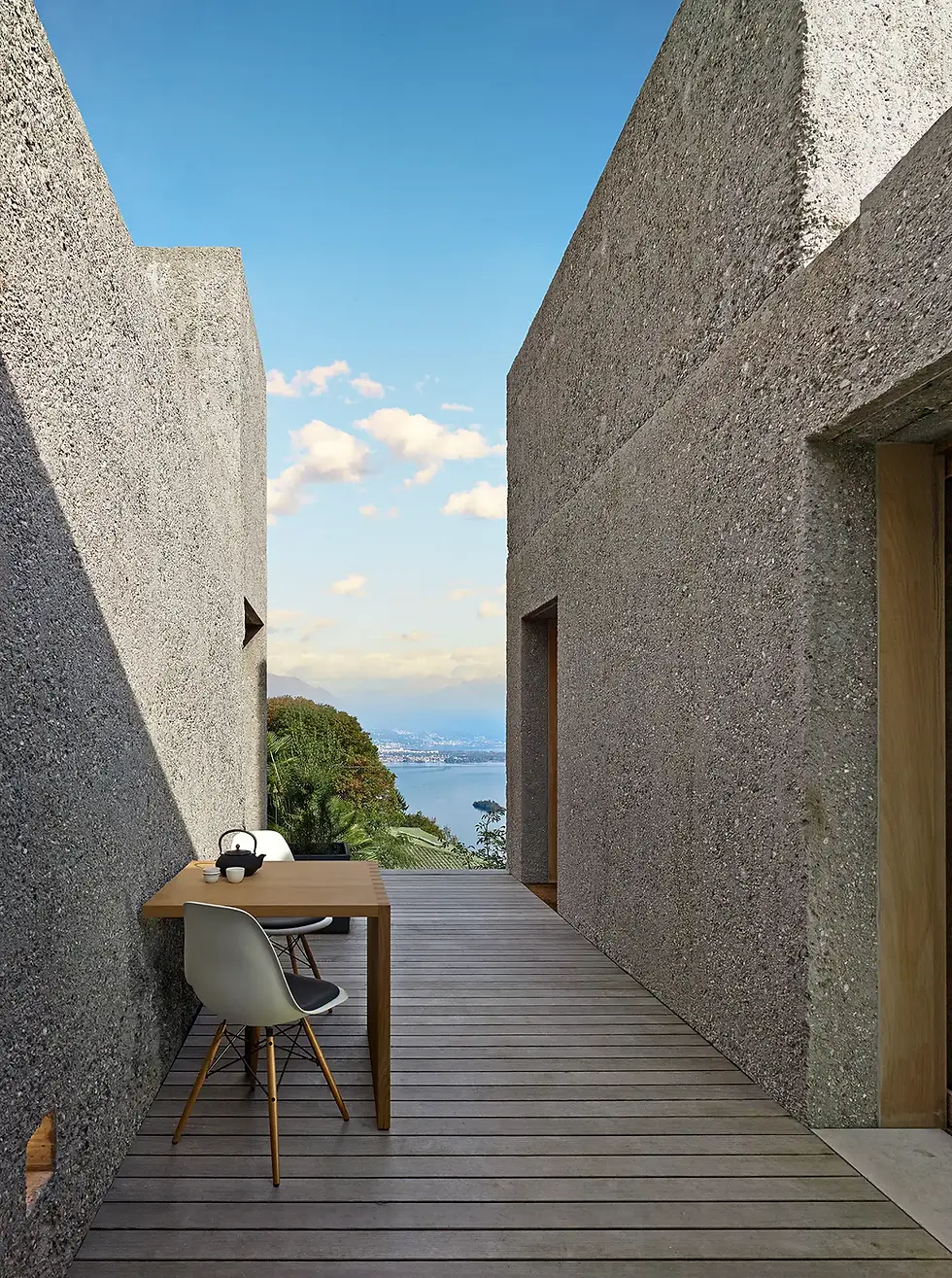THE BEACH HOUSE
Ultimately, they decided to create rigid star joints at the points of maximum deflection and to make all beam joints moment-resistant. This approach resulted in a rigid beam grid over the entire main hall, rather than a primary and secondary structure.
From an architectural perspective, it was essential that no diagonal bracing or wall panels were visible in the facade line. The overall stability of the building is achieved through the rigid frame connections of the column-beam joints, the diaphragm action of the cross-laminated timber roof, and the tension-compression chord formation in the facade line. The circular arrangement of the "Tree Trunks" with the upper compression ring at the column heads also contributes to horizontal stiffness. All columns were designed with hinged bases, allowing for a simple connection to the underlying steel and reinforced concrete structure.Vertical loads are transferred from the main beams to the facade and interior columns. The main hall beams carry significant loads, as large sections house a complete building with offices, technical areas, and a restaurant. The rest of the roof is designed as a garden with similarly high loads.
I was approached by Master carpenter and craftsman Mattias Andersson the creative force behind Designwork Varberg, to capture The Beach House that he built, featuring exquisite high-end sliding doors from Hajom.
Amidst a landscape of traditional bungalows, architect Matilda Ekman of Maestrale Arkitektur undertook the challenge of crafting a summerhouse that both honors and elevates its surroundings. With a keen sensitivity to the site, she sculpted a modern, curvilinear form that gracefully embraces the constraints of its narrow plot. Ekman’s design, rich in natural wood materials, achieves a delicate balance—harmonizing contemporary innovation with the enduring character of the coastal environment.
wood forest
Prefabricated architectural concept by architect Emelie Holmberg. I photographed the first made situated in unspoiled woodlands on the island of Väddö, Sweden.
It grew out of a realization of changing living and working patterns partly precipitated by the pandemic. Pre-Covid, Emelie had dreamt of a more flexible lifestyle facilitated by technology, allowing her to work remotely wherever she chose, so long as she had internet access.
This partly sparked the idea for Gimme Shelter, which began life as a concept for her own self-build, low-cost home. The project comprises two structures. One measures 32 sq m and contains a living room, kitchen, and bathroom; the other occupies 10sq m and houses a bedroom.
GIMME SHELTER
I was approached by Master carpenter and craftsman Mattias Andersson the creative force behind Designwork Varberg, to capture The Beach House that he built, featuring exquisite high-end sliding doors from Hajom. Amidst a landscape of traditional bungalows, architect Matilda Ekman of Maestrale Arkitektur undertook the challenge of crafting a summerhouse that both honors and elevates its surroundings. With a keen sensitivity to the site, she sculpted a modern, curvilinear form that gracefully embraces the constraints of its narrow plot. Ekman’s design, rich in natural wood materials, achieves a delicate balance—harmonizing contemporary innovation with the enduring character of the coastal environment.
BY JAMES SILVERMAN PHOTOGRAPHY














































